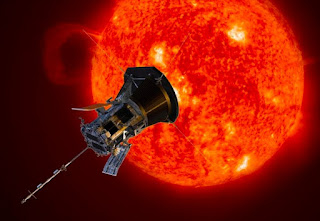The Parker Solar Probe, NASA's space probe, has set a new record after completing its 10th closest perihelion or orbit to the Sun. On November 21, 2021, the space rover will be closest to the Sun's surface at 8.5 million km.
This makes it the closest spacecraft to survive past the Sun. Not only that, the Parker Solar Probe also broke another record as the fastest man-made object ever. On the way, Parker managed to reach a speed of 586,864 km / h.
This speed beat the record holder of the spacecraft Helios-2 with a maximum speed of 252,792 km / h. The 10th orbit is one of 24 planned orbits to approach the Sun. The method uses the gravitational pull of Venus in a series of seven flybys until it finally reaches a distance of 6.9 million km from the Sun's surface and reaches speeds of over 690,000 km/hour.
Quoted from New Atlas, Tuesday (11/30/2021) Parker Solar Probe, which was launched on August 12, 2018 from Cape Canaveral Air Force Station, Florida, United States, is able to withstand heat and radiation.
However, the probe remains vulnerable to damage and can create harmful electricity from solar radiation, so its orbit is highly elliptical to allow it to recover and transmit recorded sensor data about the Sun's corona, magnetic field, and solar energy particle dynamics.
So far, the Parker Solar Probe is in good health and operating normally. The spacecraft will start submitting its findings on December 24 and end on January 9, 2022.
The Parker Solar Probe's journey to the Sun is not as easy as one might think. it must be thwarted by storms and dust. Small grains of dust 2 to 20 microns in diameter at high speed had hit it. The Parker Solar Probe is known to experience intense periods of being hit by dust grains on average once every 12 seconds. Luckily, the impact of the collision so far has not caused major damage and the Parker Solar Probe can still continue its journey.


